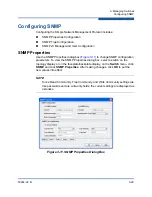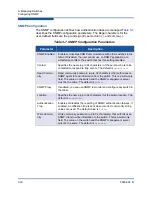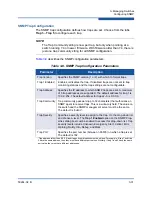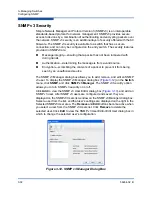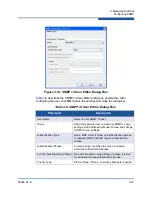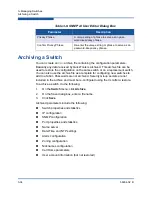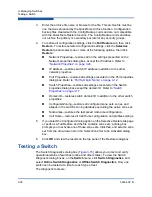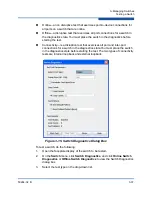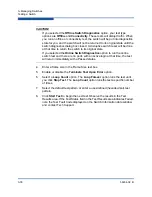
3–Managing Switches
Configuring the Network
59264-02 B
3-23
Embedded GUI (Graphical User Interface)—allows users to point a browser
at the switch and use the QuickTools web applet.
GUI Mgmt—allows out-of-band management of the switch from the switch
management application (GUI). If disabled, the switch cannot be specified
as the entry switch for a fabric in the GUI, but can still be managed through
an in-band connection.
Telnet (Command line interface)—allows users to manage the switch
through a Telnet command line interface session. Disabling Telnet access to
the switch is not recommended.
SNMP (Simple Network Management Protocol)—allows management of the
switch through third-party applications that use SNMP.
NTP (Network Time Protocol)—allows the switch to obtain its time and date
settings from an NTP server. Configuring all of your switches and your
workstations to utilize NTP will keep their date/time settings in sync and will
prevent difficulties with SSL certificates and event logs.
CIM (Common Interface Model)—allows management of the switch through
third-party applications that use CIM.
FTP (File Transfer Protocol)—allows file transfers to the switch via FTP. FTP
is required for out-of-band firmware uploads which will complete faster than
in-band Firmware uploads.
Management Server—allows management of the switch through third-party
applications that use GS-3 Management Server.
Call Home—allows users to configure their switches to send alerts and
events to pagers, and Email. Users can configure the type of events and
where the alerts are sent.
Configuring the Network
Network configuration includes the following elements:
Network IP Configuration
IPv4 and IPv6 Addressing
Network DNS (Domain Name Service) Configuration





















